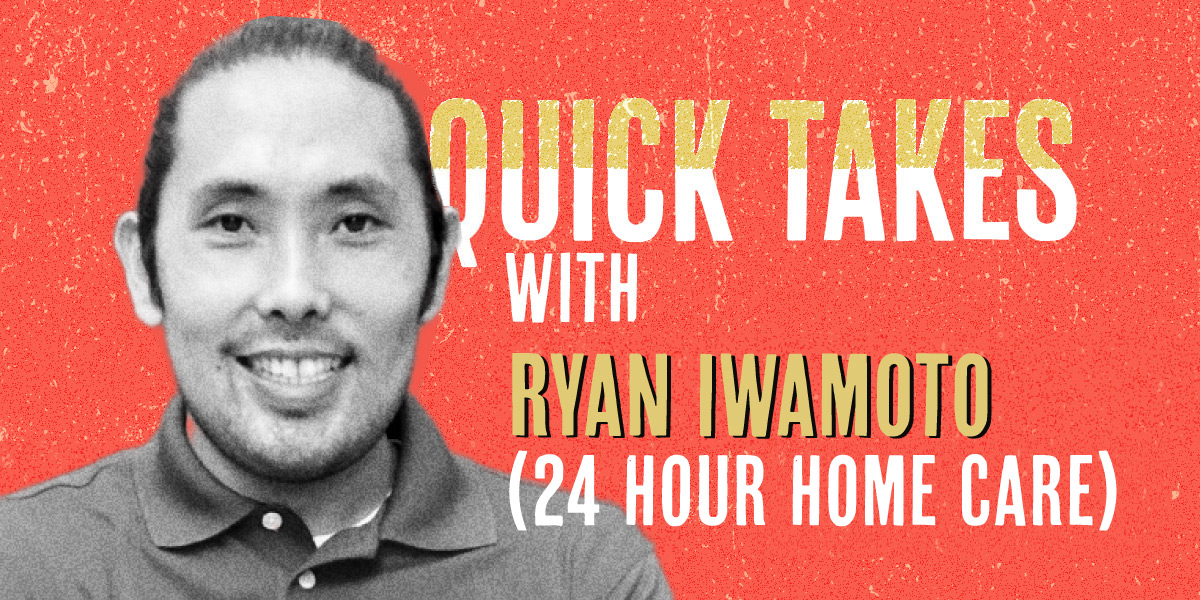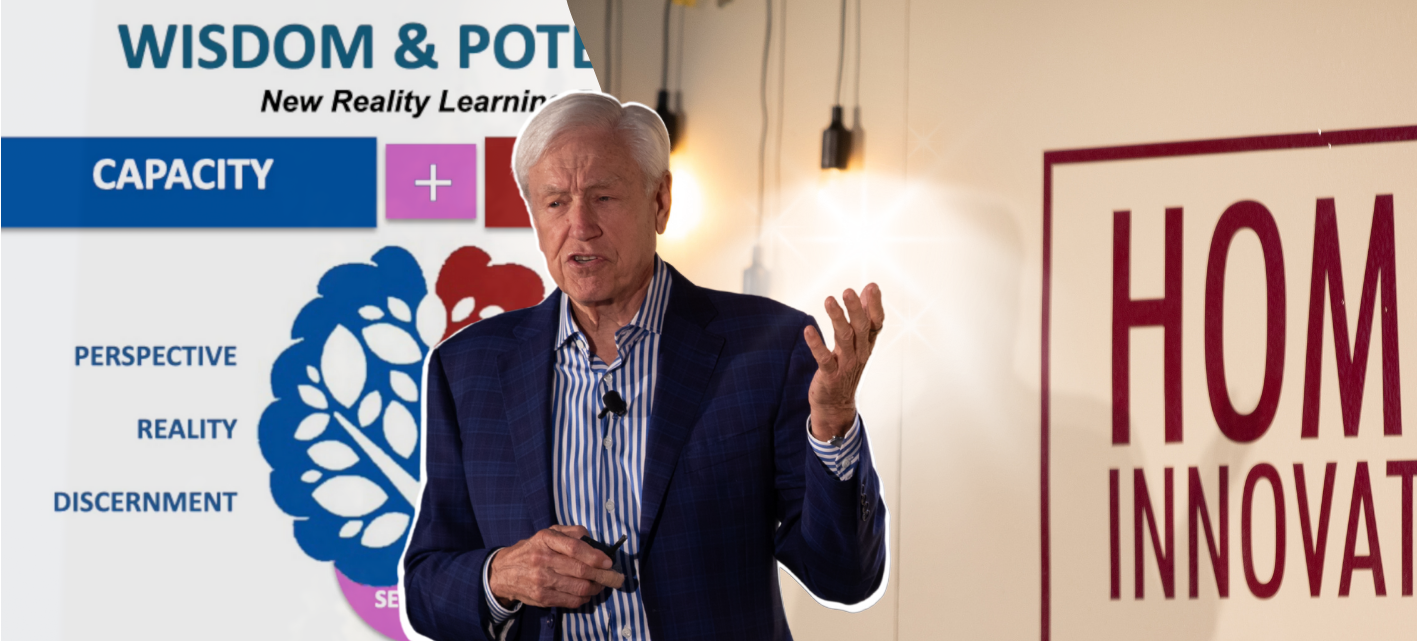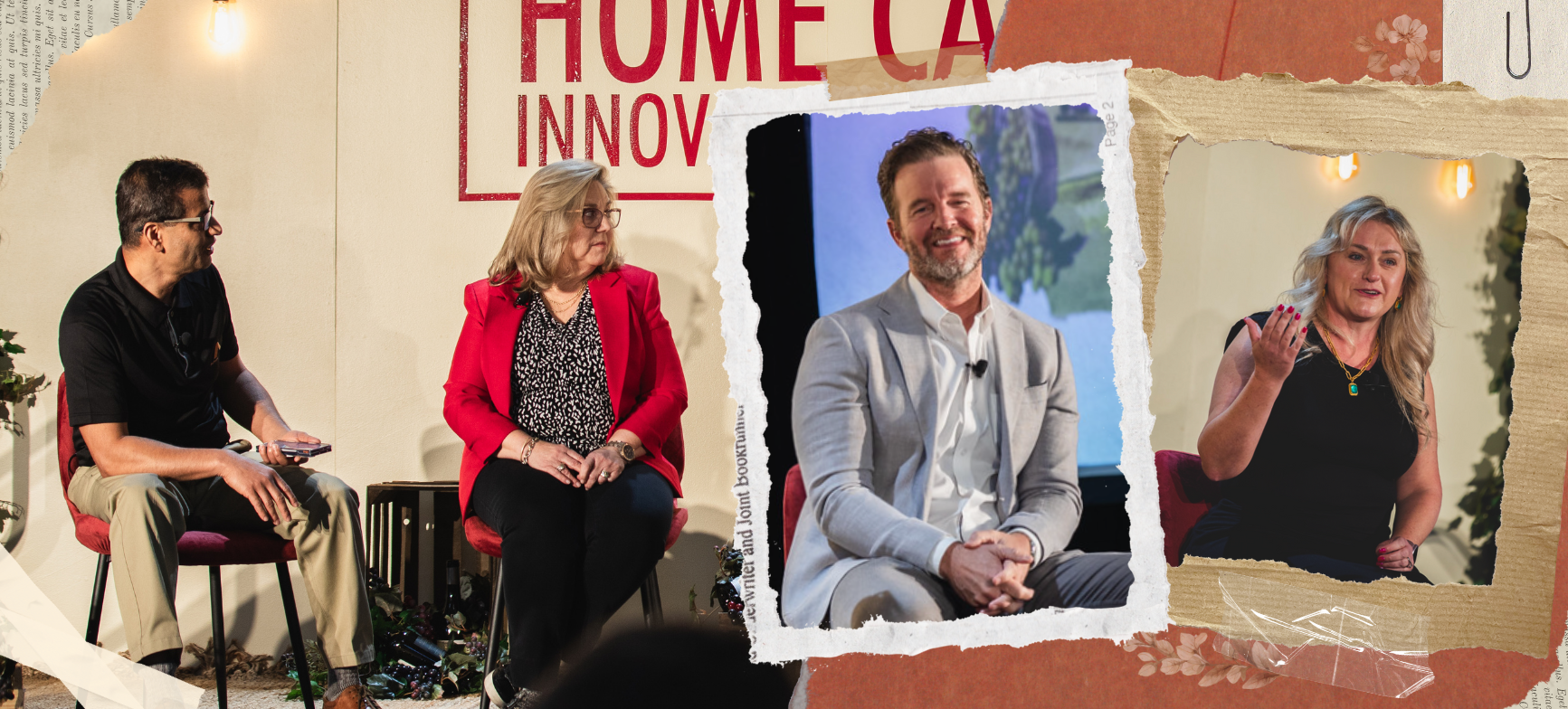In early April, Ryan Iwamoto posted a picture of himself on LinkedIn, flanked by two of his employees, each proudly holding a gift meant to celebrate 10 years of service with 24 Hour Home Care: a brand new Rolex watch.
“Welcome to the Rolle Club!” he wrote in the caption.
It’s just one example of how Iwamoto, President and Co-Founder of the company, makes sure his employees know they’re his company’s beating heart – the “secret sauce,” as he calls them – of its growth and success.
Scroll through his posts and you’ll find dozens of pictures of him alongside his employees – in a cooking class, at various parties, taking silly pictures – and many more.
Since starting operations in 2008, Los Angeles-based 24 Hour Home Care has expanded to 23 locations throughout California and Arizona, with over 12,000 employees.
Employee recognition is a cornerstone of his company’s culture, Iwamoto says, but it can be easy to lose sight of what makes your company your company while involved in the whirlwind of scaling operations. He urges other in-home care leaders to nurture what makes them unique – most notably, their team members – even as they grow.
“If you want to cultivate a strong and positive culture, you’ve got to be intentional,” Iwamoto says.
We sat down with Iwamoto, a speaker at the upcoming Home Care Innovation Forum, to discuss how he kept his company’s culture alive through its growth cycles and the strategies he’s employed to stem staffing issues.
This transcript has been edited for length and clarity.
What is the key to preserving your company culture as your business expands?
Iwamoto: I think the most important thing is that it’s not just one thing that you do. It’s not like giving massages or making sure you have a keg in the kitchen. You have to take a multi-faceted view when creating a culture – how you socialize your employees, how you hire them, train them, promote them. All of those are factors to consider when creating your culture.
If you want to change your company culture, change who you hire. Change how you pay or how you socialize your employees. It requires ongoing effort and attention and it's not a one-time event or a series of actions, but rather an ongoing process that requires a ton of commitment to creating a positive and engaging workplace for employees.
Back in 2008, what was your culture like? Have you sustained it to today?
Iwamoto: When a company is smaller and just starting out, it’s easier to instill and maintain a strong culture. As a founder or CEO, your employees will see you every single day. They talk to you and they listen to you. They can just really feel the culture coming from you due to the proximity. But as you get larger and operate in more territories, you get farther away from your employees because they’re more dispersed. Then it becomes a lot harder.
When we started, we didn't have a company mission or values for the first seven or eight years of the business. It's not that we didn't have values within the company. We just never really memorialized it because we felt people already knew some of our values, and at the time it was all about growth and working hard. We didn't have to say (what the values were) for people to know what it was.
But then, as we got bigger, we didn’t have the same connections with employees as when we started. We thought, ‘Hey, we have to start memorializing our values.’ That’s probably the most important thing to do – really have these sets of values, whether it's your vision, your mission, your value of your employees. These should be the guiding principles that drive all the decisions and actions taken by the team, regardless of your size. When you get bigger you need to have these, so that when people (leadership) are not around, employees still know how to act because they’re driven by the values you set with the organization.
How do you maintain your company's culture and attend to the specific needs of your employees?
Iwamoto: The first thing we looked at was ‘Why do we do what we do?’ What is our company's ‘Why’, and how can we ensure this is known across the business? We came to a “Why” after many iterations, but it’s really to impact people's lives by making a difference every day. We didn't just put that on the wall, we wanted to ensure that the values supporting our Why are living and breathing throughout the business.
At every all-hands meeting, we bring up people living out our “why” and reward them. They're selected through peer nominations and our performance reviews with the employees. Much of the performance is based on how well they carried out the different values we set for the organization. So it's something that truly is happening and monitored and is visible across the organization.
You need to find ways to continue to improve as your company grows and scales, and the best way we found to do that is to seek feedback from your staff. We do an engagement survey every two years to get data and then track that information. I'm a big believer in what gets measured gets managed and that’s something that holds us accountable for making sure that we're providing a good experience. Then qualitatively, we can use some of the themes we see across these surveys to really influence how we structure our strategy to continue to improve.
Culture is progress over perfection. I don't think you'll ever feel like you're perfect with a company culture, but if you're making the right activities to improve it and listening to your employees, I believe you have a pretty good formula.
What strategies have given you good results in addressing the ongoing staffing crisis?
Iwamoto: One of the best investments that we made was to leverage our employee retention data, with a particular focus on caregiver retention, to guide our decision-making process: What's working? What's not? How can we prevent it (turnover)? We looked at our retention numbers across the caregivers and saw there was a particular number of hours that a caregiver works before they attrition out. For us, it was 12 weekly hours. So for our data, if we see a caregiver working an average of 12 weekly hours or less for a month's time, they're gone the following month.
We also saw from the data that the month before they were working 12 weekly hours on average they were working about 16 to 17 hours per week. So we use that data to help predict when our caregiver is going to leave our organization. If we know when that's going to happen, we get a better chance of intervening to make sure we get our caregivers more work – and keep them.
Managers are very keen on how many hours a caregiver is working with our organization. Now our culture has changed to: ‘How do we staff for the caregiver and make sure they get the hours that they want?’ After looking through the data and really putting a focus on it, we actually saw our retention numbers increase 14% year over year.
If you could give your home care leadership colleagues one piece of advice, what would it be?
Iwamoto: If a strong company culture is an important part of your organization, then it's crucial to have an owner of it, someone responsible for maintaining and really elevating it. In the beginning, that can be the founder or the CEO, but it’s hard to do that as you start to scale with all the different responsibilities that you have as a CEO.
You really must have someone who owns it. That person shouldn’t be several levels down from you, like a culture specialist or something like that. That's not going to work. If you really, really want to make it a priority and show the company that it’s a priority, then make that person report to the CEO.
Posted by
Join us!
The retreat for home health care and hospice leaders innovators.
May 17-19, 2026 | Palm Springs, CA




-2.png)


-2.png)


Comments